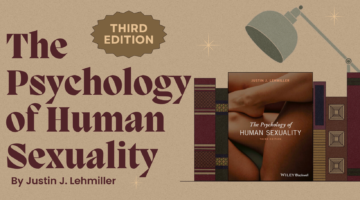Condom Use Decreased During the Pandemic—And This Might Be Why
January 25, 2021 by Justin Lehmiller
We know that there have been multiple changes in sexual behavior during the COVID-19 pandemic, which I’ve blogged extensively about before (for a summary of some of the main findings, check out this video). Most of the work that has come out so far has focused on changes in sexual desire and how much sex people are having—but what about safer-sex practices? Specifically, have rates of condom use changed at all during the pandemic?
Some of you might predict that condom use has probably increased. After all, during a time when people have heightened concern for their health and are taking more safety precautions in day-to-day life (such as wearing masks in public), it might seem reasonable to predict that people would be taking more precautions in the bedroom as well. Related to this, maybe people consider it to be an especially bad time for an unintended pregnancy in the midst of an economic downturn and healthcare rationing, which might lead folks with pregnancy concerns to err on the side of safety.
At the same time, however, others might predict a decline in condom use. According to Terror Management Theory, when the prospect of our own mortality becomes salient, it can motivate a number of changes in sexual behavior aimed at buffering death anxiety. One such change documented in previous research is that reminders of death have been linked to increased willingness to engage in risky sexual behaviors, including condomless sex with new partners [1]. These behaviors might reduce death anxiety by increasing arousal and excitement (e.g., making one “feel alive”) or generating an enhanced feeling of closeness.
So what actually happened during the pandemic? Research is more in line with the latter explanation, pointing to a decrease in safe-sex behaviors.
A new study published in the journal Sexologies examined pre-pandemic and current levels of condom use in a sample of 149 heterosexual adults in Australia who were sexually active. Data were collected between May-June of 2020.
Results indicated an overall decline in condom use frequency during sex; however, the magnitude of the decline depended on relationship status. Specifically, those in relationships experienced a markedly lower decline compared to those who were single.
This prompted me to examine whether a similar pattern emerged in our Kinsey Institute study of Sex and Relationships in the Time of COVID-19. I looked at our initial data collected between March-April of 2020 and saw a similar pattern in our sample of over 2,000 adults.
We asked our participants to rate their frequency of condom use before and during the pandemic on a scale ranging from 0% of the time to 100% of the time. On average, participants reported using condoms 43% of the time during vaginal or anal intercourse prior to the pandemic, compared to 39% of the time since the pandemic began. While not a massive drop overall, even small changes in safer-sex behavior can potentially have big public health implications.
However, like the study published in Sexologies, I also found that the changes differed based on relationship status. For example, among those who reported being single and casually seeing others, they reported using condoms 63% of the time before the pandemic, compared to 56% of the time during the pandemic. In other words, compared to the overall pattern, this group experienced a percentage decline that was almost twice as large.
For those who said they were seriously dating one person, the numbers were 46% pre-pandemic and 43% currently. And for those in a committed relationship with one person, the numbers actually didn’t change at all—they reported using condoms 33% of the time previously and currently.
Interestingly, for the relatively small group of people in our sample who said they were dating more than one person currently, they were the only group to show the opposite pattern: they said they used condoms 45% of the time before the pandemic, compared to 64% currently, which was a pretty large increase. However, this finding was based on only a few dozen people, so I’m hesitant to draw too many conclusions from it or generalize broadly, but it does point to the fact that at least some people seemed to be taking more precautions—and those who were consensually non-monogamous may have been more likely to do so.
With all of that said, results from a few different data sources point to an overall decline in condom use during the early phases of the COVID-19 pandemic. It’s important to look next at how these patterns of behavior changed over time (e.g., did the trends persist?) and further explore the psychology behind this decrease in safe sex. The Terror Management Theory reasoning above is a plausible explanation, but it is not the only potential possibility and there could be other factors at play (e.g., is it due to differences in the general availability or ease of access to condoms?).
As we await further results, the current findings tell us that while there may have been less sex overall during the pandemic, the proportion of unprotected sex seems to have increased somewhat, which raises concerns about a potential COVID-fueled rise in STDs. Although reports have suggested a decline in rates of several STDs during the pandemic, this is partly a function of the fact that there are fewer STD test being administered right now due to limited resources and fewer people going in for testing. So if unprotected sex is rising and testing is falling, there’s certainly some cause for concern.
Want to learn more about Sex and Psychology? Click here for more from the blog or here to listen to the podcast. Follow Sex and Psychology on Facebook, Twitter (@JustinLehmiller), or Reddit to receive updates. You can also follow Dr. Lehmiller on YouTube and Instagram.
[1] Taubman-Ben-Ari, O. (2004). Intimacy and risky sexual behavior—What does it have to do with death?. Death Studies, 28(9), 865-887.
[2] Dacosta, L., Pinkus, R. T., Morandini, J., & Dar-Nimrod, I. Condom Use During COVID-19: Findings from an Australian Sample of Heterosexual Young Adults. Sexologies.
Image Source: 123RF

Dr. Justin Lehmiller
Founder & Owner of Sex and PsychologyDr. Justin Lehmiller is a social psychologist and Research Fellow at The Kinsey Institute. He runs the Sex and Psychology blog and podcast and is author of the popular book Tell Me What You Want. Dr. Lehmiller is an award-winning educator, and a prolific researcher who has published more than 50 academic works.
Read full bio >


